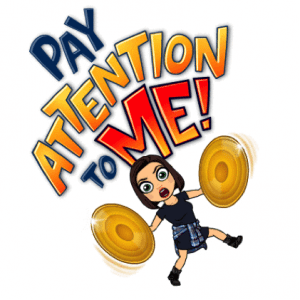Critical but Not Urgent—Where the Magic Happens
Episode #3 of the course “How to make better decisions with the Matrix” by Kari Beaulieu

Hey! Congrats! You made it over the 3-day hump! You’re well on the way to keeping with your new productivity habits, and you deserve a pat on the back. What we’re about to teach you—“we” as in me and my cartoon emoji—is better than a pat on the back, though. It’s a nugget of knowledge that will change the way you think and work.
Yesterday, I told you that most of your time should be spent on Critical but Not Urgent tasks.
This probably didn’t make a lot of sense. It’s okay. Most people who learn the Eisenhower Method are under the impression that the Critical and Urgent quadrant is the place to be.
I’m here to tell you that it’s not.
Allow me to explain.
“Critical and Urgent” tasks are reactive—they arise when you have a deadline you waited until the last minute to meet or an emergency arises. Think of all the pressing interruptions in your day; those are Critical and Urgent tasks.

For example:
1. Designing an email course for Highbrow that you need to hand in to the editor tomorrow
2. Setting up a conference call with an important client who is experiencing technical difficulties
(These examples came from a friend, I promise….)
“Critical but not urgent” tasks, on the other hand, are proactive.
They’re what allow you to break from the status quo and move forward. Working on these projects also means that fewer emergencies will arise in the future.
Things in this box could be:
1. Hiring an intern to help you produce content (like Highbrow courses)
2. Giving your entire product a two-day test drive to make sure it’s bug-free
Marketing guru Seth Godin says: “If you take care of important things, the urgent things don’t show up as often. The opposite is never true.”
I say: “Working proactively is what will take you from the present to the future.”
Imagine This
Instead of fielding customer emails all day tomorrow, you take three hours and create email templates for the most common responses you send. The day after tomorrow, by 11AM, you’ll be done working on customer emails (because you saved time using those templates, right?). Then you can show your boss that new initiative you’re working on.
Imagine your boss patting you on the back. Now imagine me looking at you like this:

You can do it. I’m holding you to it.
Recommended book
“The Checklist Manifesto: How to Get Things Right” by Atul Gawande
Share with friends

